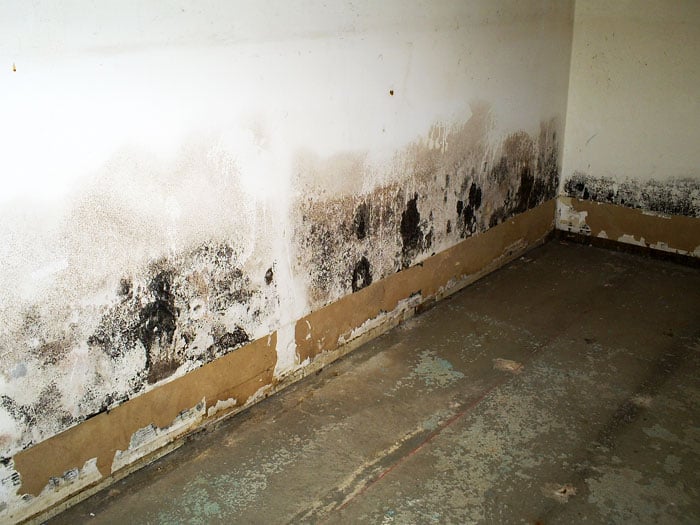We've stumbled upon this great article pertaining to Ways to Reduce The Risk Of Fire And Water Damage below on the internet and think it made good sense to write about it with you on this site.

Water offers life, yet water invasion on some parts where it's not meant to be can lead to damage as well as aggravation. It can peel away the surface and deteriorate the product's foundation if the water seeps into your structure. Mold and mold also prosper in a damp setting, which can be harmful for your as well as your family members's health. On top of that, homes with water damages odor moldy as well as old.
Water can originate from several sources like tropical cyclones, floods, burst pipelines, leakages, and sewage system problems. If you have water damage, it's far better to have a functioning knowledge of safety precautions. Below are a couple of standards on how to handle water damage.
Do Prioritize Home Insurance Protection
Seasonal water damage can originate from floodings, seasonal rains, as well as wind. There is additionally an event of a sudden flood, whether it came from a defective pipe that instantly bursts into your residence. To shield your house, get home insurance policy that covers both disasters such as all-natural catastrophes, as well as emergencies like damaged plumbing.
Do Not Forget to Turn Off Energies
When disaster strikes and also you're in a flood-prone area, shut off the major electrical circuit. Switching off the power stops
electric shocks when water comes in as water serves as a conductor. Don't fail to remember to turn off the primary water line valve as a method to avoid more damage.
If the floodwaters are getting high, keep your furniture secure as they can move and also cause extra damages.
Do Keep Proactive and also Heed Weather Condition Notifies
If you live in an area tormented by floodings, stay aggressive and ready at all times. Pay attention to the news and also emptying warnings if you live near a body of water like a creek, lake, or river .
Don't Neglect the Roof
Your contractor should take treatment of the defective rain gutters or any kind of various other signs of damage or weakening. An evaluation will certainly avoid water from moving down your walls and also soaking your ceiling.
Do Pay Attention to Little Leaks
There are red flags that can attract your interest and show to you some weakened pipelines in your residence. Signs of red flags in your pipelines include bubbling paint, peeling off wallpaper, water touches, water spots, or dripping noises behind the walls. Repair as well as inspect your plumbing repaired prior to it results in massive damages to your residence, finances, as well as an individual nightmare.
Don't Panic in Case of a Ruptured Pipeline
Timing is essential when it comes to water damage. If a pipe ruptureds in your home, quickly closed off your main water shutoff to reduce off the resource and protect against more damage. Call a reliable water damages remediation professional for assistance.
Water gives life, however water intrusion on some parts where it's not intended to be can result in damage and hassle. In addition, houses with water damages odor old and also musty.
Seasonal water damages can come from floods, seasonal rains, as well as wind. Indications of red flags in your pipelines consist of gurgling paint, peeling wallpaper, water streaks, water spots, or trickling audios behind the walls. If a pipeline bursts in your residence, right away closed off your main water shutoff to cut off the resource and also prevent even more damage.
Some Do's & Don't When Dealing with a Water Damage
DO:
Make sure the water source has been eliminated. Contact a plumber if needed. Turn off circuit breakers supplying electricity to wet areas and unplug any electronics that are on wet carpet or surfaces Remove small furniture items Remove as much excess water as possible by mopping or blotting; Use WHITE towels to blot wet carpeting Wipe water from wooden furniture after removing anything on it Remove and prop up wet upholstery cushions for even drying (check for any bleeding) Pin up curtains or furniture skirts if needed Place aluminum foil, saucers or wood blocks between furniture legs and wet carpet Turn on air conditioning for maximum drying in winter and open windows in the summer Open any drawers and cabinets affected for complete drying but do not force them open Remove any valuable art objects or paintings to a safe, dry place Open any suitcases or luggage that may have been affected to dry, preferably in sunlight Hang any fur or leather goods to dry at room temperature Punch small holes in sagging ceilings to relieve trapped water (don't forget to place pans beneath!); however, if the ceiling is sagging extremely low, stay out of the room and we'll take care of it DO NOT:
Leave wet fabrics in place; dry them as soon as possible Leave books, magazines or any other colored items on wet carpets or floor Use your household vacuum to remove water Use TV's or other electronics/appliances while standing on wet carpets or floors; especially not on wet concrete floors Turn on ceiling fixtures if the ceiling is wet Turn your heat up, unless instructed otherwise

Hopefully you enjoyed our article about Preventing Fires and Water Damage In Your Home. Thanks a ton for spending some time to browse our article post. Do you know somebody who is curious about the subject? Why not promote it. I cherish reading our article about What You Can Do At Home To Prevent Fire And Water Damage.